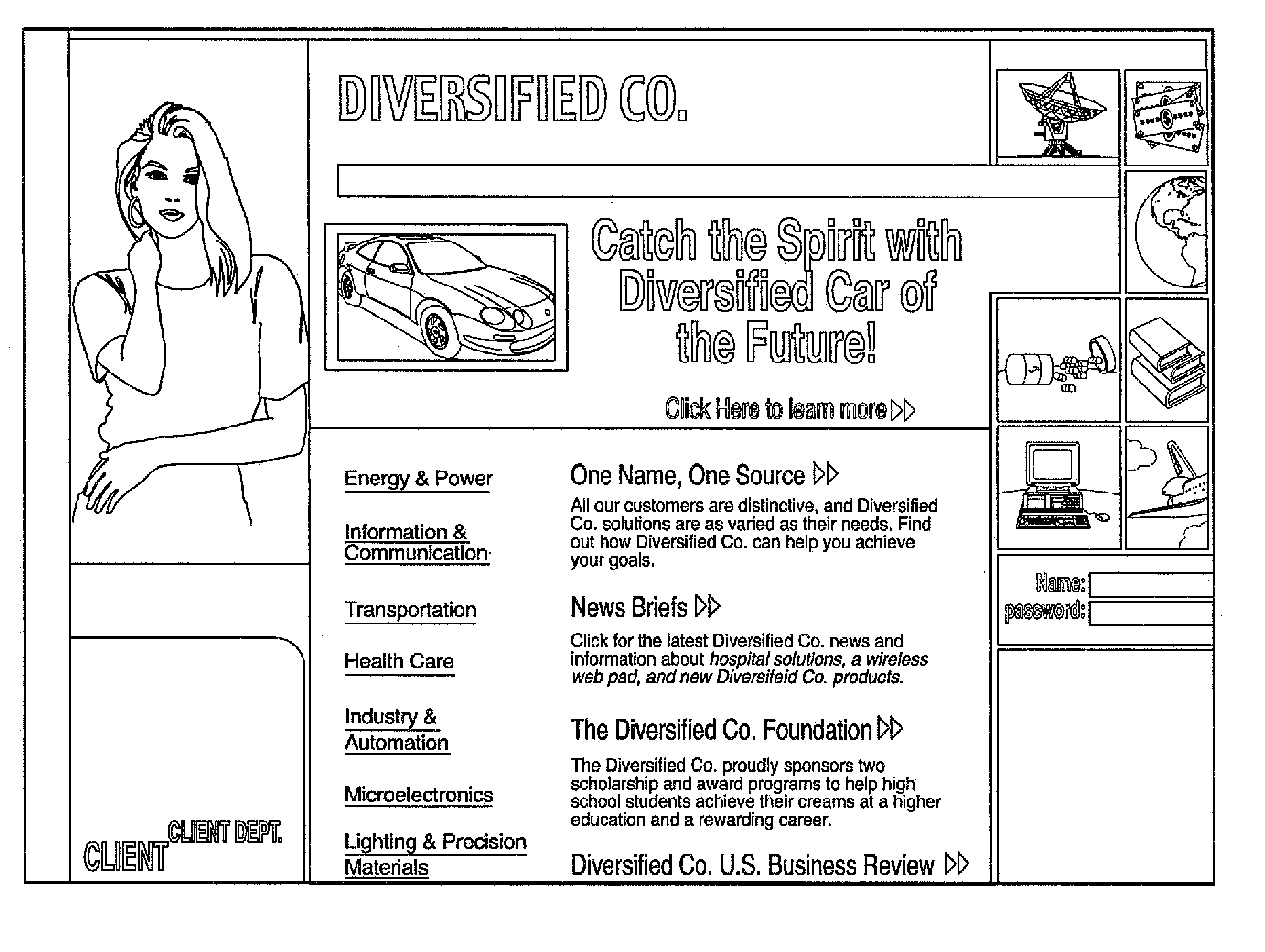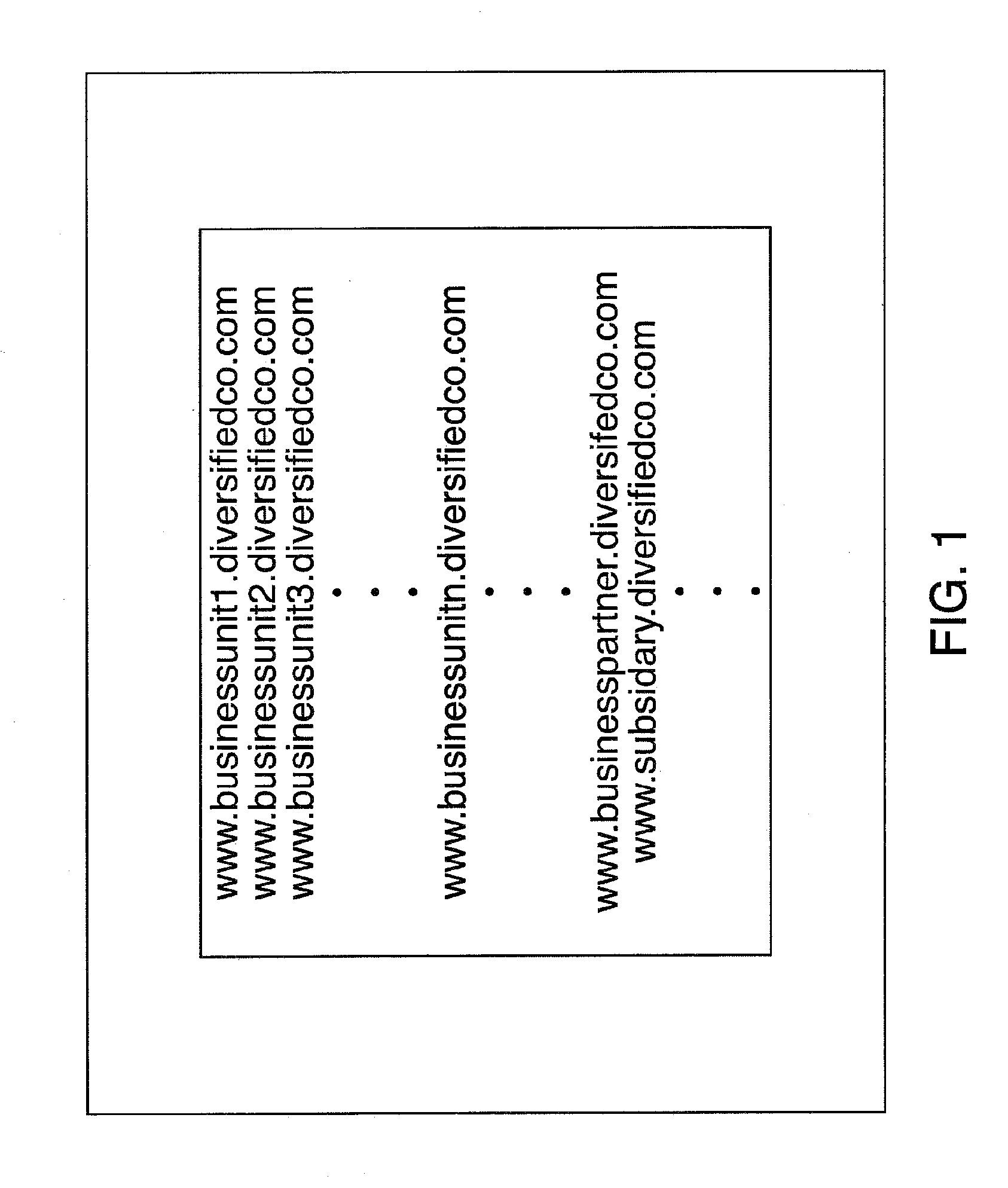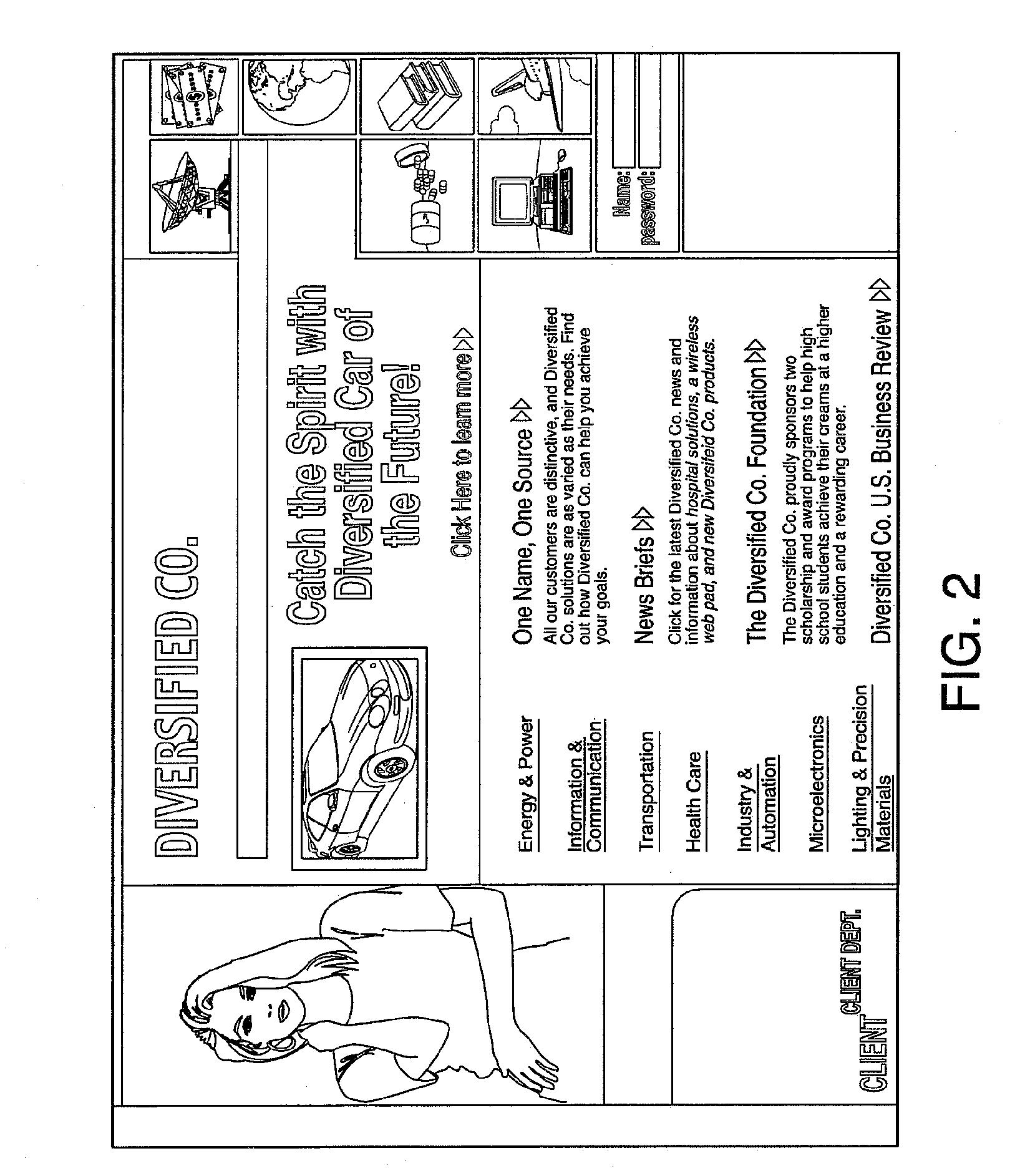E-business systems and methods for diversified businesses
- Summary
- Abstract
- Description
- Claims
- Application Information
AI Technical Summary
Benefits of technology
Problems solved by technology
Method used
Image
Examples
Embodiment Construction
[0031] In a diversified company or a joint business enterprise, a plurality of business units may operate with any degree of independence, yet provide goods and services that may benefit a common customer base. These business units may, either individually or collectively, possess any of a wide variety of corporate structures. In one scenario, the business units may be owned in whole or in part by a common entity, yet effectively operate as separate business concerns. In such a diversified company, products and / or services provided by the various business units may or may not have common customer bases or related markets. In another scenario, the business units may be joint venture or strategic partnership entities, jointly owned and managed by two or more companies. In still another scenario, the business units may be two or more companies that have recently merged, and that seek to present a common face to customers even before combining their information systems and back-office p...
PUM
 Login to View More
Login to View More Abstract
Description
Claims
Application Information
 Login to View More
Login to View More - R&D
- Intellectual Property
- Life Sciences
- Materials
- Tech Scout
- Unparalleled Data Quality
- Higher Quality Content
- 60% Fewer Hallucinations
Browse by: Latest US Patents, China's latest patents, Technical Efficacy Thesaurus, Application Domain, Technology Topic, Popular Technical Reports.
© 2025 PatSnap. All rights reserved.Legal|Privacy policy|Modern Slavery Act Transparency Statement|Sitemap|About US| Contact US: help@patsnap.com



